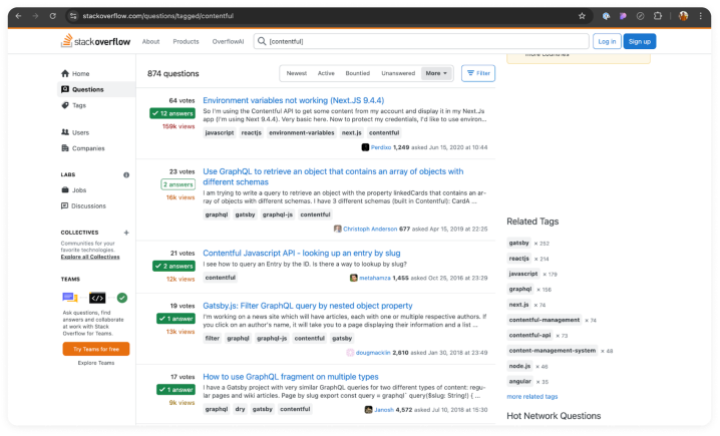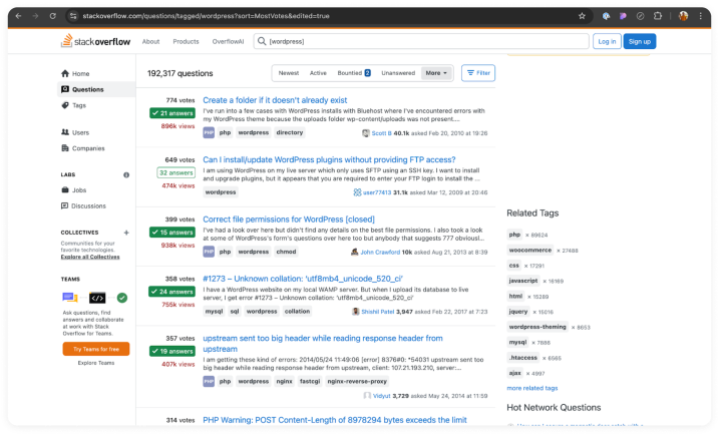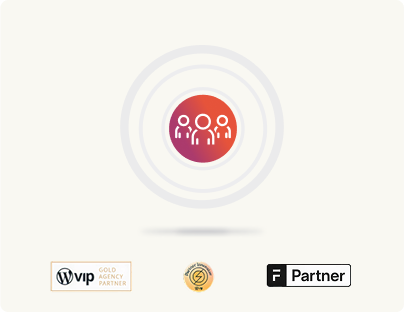Contentful vs WordPress Security for enterprises
When enterprises evaluate CMS platforms, security isn’t just a checklist item, it’s a dealbreaker. The risk exposure of a content platform that powers your website, customer portals, and apps can have brand, legal, and financial implications.
And yet, not all CMS platforms approach security the same way.
The difference between Contentful and WordPress starts at the root: one is a closed-source SaaS platform, and the other is an open-source ecosystem. That design choice influences everything, from how fast vulnerabilities are patched, to how much control your security team has.
Let’s break this down the way we often do with enterprise teams we work with starting with the architectural philosophy.
Closed source vs open source security models
Contentful’s closed-source nature means that the platform’s codebase is not available publicly. Using Contentful means relying on the vendor for updates, patches, and feature changes. While Contentful’s security processes are handled by a dedicated in-house team, this centralized approach limits flexibility for enterprises that may need tailored security measures or have specific compliance requirements. The responsibility for keeping the platform secure rests entirely on the vendor, and you have to trust Contentful’s security team to handle issues swiftly and correctly. While a good vendor takes care of these, delays may be possible in shipping security updates. Also, generally, enterprises will have less control over their security configurations.
WordPress, on the other hand, is fully open-source. You see everything. And more importantly, so does a global network of developers, security researchers, and plugin authors – who audit, patch, and iterate in near real-time. Vulnerabilities are often fixed faster than the vendor SLA cycles most proprietary platforms offer.
You don’t just get transparency, you get agency.
Community-driven security updates
Because Contentful is a proprietary platform, the responsibility for issuing security patches lies with the vendor. While this can create an assurance that a central team is managing the security of the platform, it means enterprises are left waiting for official updates. The potential risk here is that when vulnerabilities are discovered, there may be delays in patching them, leaving enterprises exposed.
WordPress’s open-source model, in contrast, thrives on community-driven updates. Security vulnerabilities are quickly identified by the community and often fixed rapidly. The WordPress community regularly reviews and updates security practices, and as a result, the platform has earned a reputation for being highly responsive to threats.
Community-driven support insights
A quick search on Stack Overflow reveals over 192,000 threads for WordPress-related queries, compared to around 874 for Contentful.


This stark difference highlights the breadth of community-driven knowledge and support available for WordPress users, making it easier to troubleshoot and innovate.
In addition, WordPress’s extensive ecosystem of plugins and themes is also monitored for vulnerabilities. Security experts and plugin developers constantly update and audit code to prevent malicious activity. This decentralized, community-driven approach means that even if vulnerabilities arise, there is a massive network of people working to fix them promptly.
Customizing your security stack
Contentful’s closed-source nature limits how enterprises can customize security protocols. Enterprises can leverage Contentful’s native security features, but they are constrained by the platform’s pre-built architecture. For example, integrating advanced security tools or configurations tailored to specific business requirements may require working closely with Contentful’s development team, which could result in delays or additional costs.
WordPress excels in customization, allowing enterprises to adjust and implement their own security protocols with ease. The open-source community frequently develops a wide range of security plugins and tools designed to address specific needs, whether it’s two-factor authentication, firewall protection, automated backups, or malware scanners.
Enterprises can choose from a vast selection of trusted tools or build their customized security systems. This flexibility ensures that WordPress can be adapted to meet the most stringent security and compliance standards, especially for enterprises that require tailored security features to align with their business processes.
Third-party integrations and transparency
With Contentful, third-party integrations and security plugins are limited, as the platform tightly controls the ecosystem. Enterprises must rely on the features Contentful offers or wait for the company to release new integrations or updates. While this controlled environment may reduce the likelihood of integration-related vulnerabilities, it also stifles the potential for custom security solutions that many enterprises need.
WordPress thrives on its ability to integrate with a wide variety of third-party security tools, offering a broad range of customizable solutions for enterprises. This flexibility allows enterprises to leverage best-in-class security products and services from external providers, ensuring that they can build a multi-layered security approach that addresses a wide range of potential threats.
The open-source ecosystem also ensures transparency in how these third-party tools are developed and maintained, offering enterprises greater visibility into their security measures.
Compliance and control
Contentful offers enterprise-grade security but relies on its centralized model to ensure compliance with various regulations (such as GDPR, SOC 2, etc.). While this may be sufficient for many enterprises, it doesn’t offer the same level of control over compliance configurations as WordPress.
When it comes to compliance and data security, WordPress offers much more flexibility. Enterprises can control data storage, encryption, and access policies directly within their WordPress environment, ensuring full compliance with local and international regulations. With the right plugins and configurations, WordPress can be tailored to meet highly specific compliance standards, providing more control to enterprise users than closed-source alternatives like Contentful.
So, who does security better?
It depends on what kind of enterprise you are.
If you want a secure platform managed entirely by the vendor, and you’re okay with limited visibility or customization, Contentful offers a strong foundation.
But if you need a CMS that gives you:
- Transparency
- Rapid patch cycles
- Customizable control layers
- Integration freedom
- Community-powered resilience
…then WordPress has the edge. And when paired with hardened infrastructure (like WordPress VIP, SnapWP, or your hardened environment), it’s not just secure, it’s battle-tested at scale.







